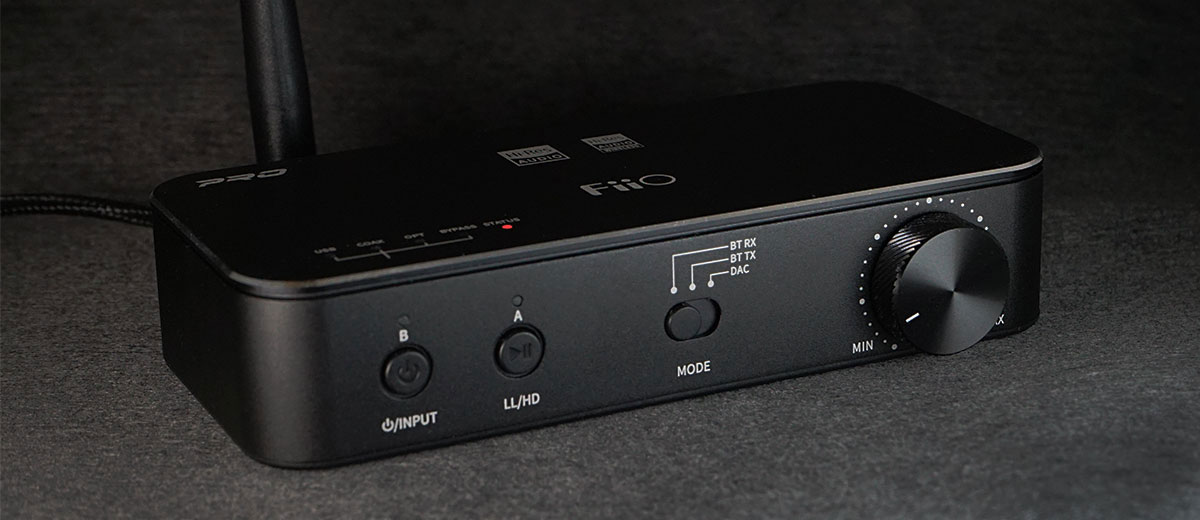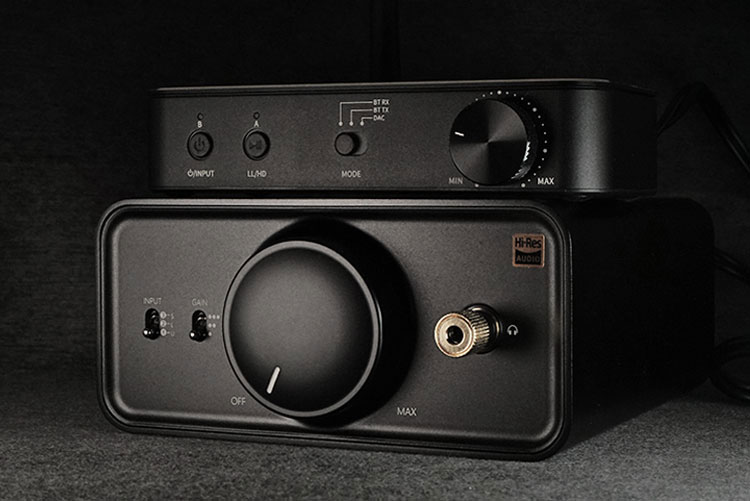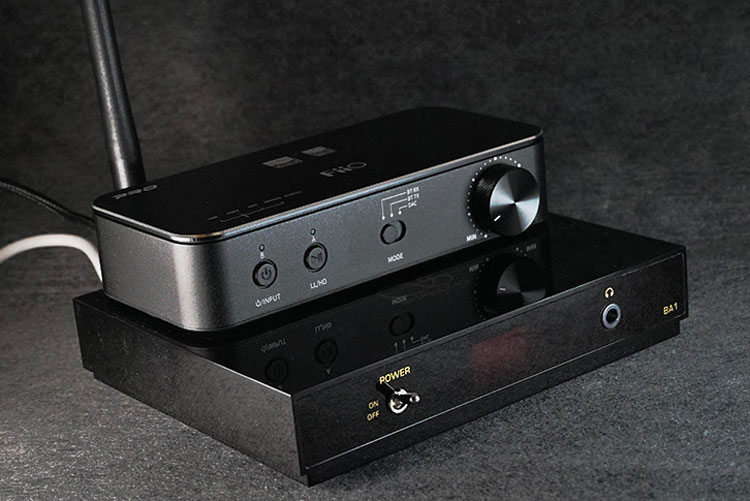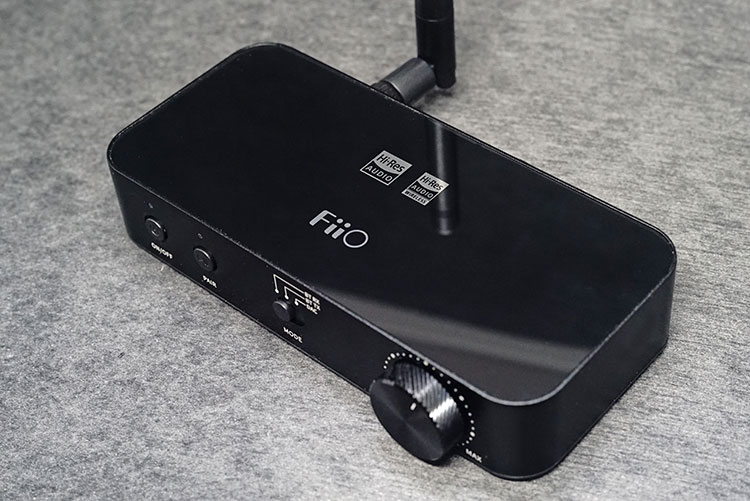Sound Impressions
Summary
The BTA30 Pro is able to deliver a defined and smooth output with a hint of warmth. With the revamped hardware, the BTA30 Pro is able to deliver a more dynamic and defined bass punch, especially with the USB connection, working great with speakers or other smooth-sounding gears.
The vocal performance has a clean outline and a small bump in the higher register that helps to shape the output more holographically. The output has enough dynamic range and output quality that takes the experience to a higher level when compared to the earlier product BTA30.
With DSD support it feels much more complete and takes the output quality to another level, boosting density, clarity, and perceived resolution all at once.
I would, however, recommend changing the stock RCA cables as they are a little bit basic and more resistive than some aftermarket alternatives. You will get a jump in clarity from a better RCA connection.
Timbre
When testing as a receiver using phones and DAPs to beam over LDAC signal, the overall tuning is slightly warm like the BTA30 Pro but with enhanced clarity over the original.
This actually works well for a living room or bedroom set up if you connect to speakers. It complements the K5 Pro well and the output doesn’t feel lackluster in power or resolution. Also, it sounds quite polished in the highs.
The output of the BTA30 Pro has a bit of sweetness from the lifted treble followed by a rather audible roll-off, which can be altered in the controller app EQ. Depending on your preference towards a more edgy treble or more roundness for a relaxing listen, there is good flexibility for users to self-define the final tuning.
Staging
Similar to the BTA30, the stage rendered on the BTA30 Pro does not feel confined and is rather natural and smoothly rendered.
With various tracks tested, there is decent separation and the vocal line can clearly cut through and imaged clearly from the guitar and chorus when listening through. Treble extension is politely cut off, killing some reverb, and is able to hold a quartet before getting congested.
For a USB-powered device, FiiO has achieved a good balance in the tuning without any frequencies sticking out or sibilance that kills the dynamic range, putting together a defined classroom-sized headroom that could fit a small band or a string quartet.
Select Comparisons
Shanling BA1
$169
Technical
The Shanling Audio BA1 is an LDAC capable Bluetooth receiver with also AptX LL/HD support. While it has no transmitting function, there is a 3.5mm jack on top and a screen that shows the connection status. The BA1 uses CSR8675 chipset and ESS Sabre ES9218P supporting up to 24bit/96kHz decoding, and the SNR goes as high as -115dB which is quite decent for a USB device.
BTA30 Pro features the same Bluetooth chipset but comes with superior DSD256 and PCM 384kHz decoding with its XMOS solution and using the ESS ES9038Q2M chipsets which is slightly more premium.
SNR is similarly measured at –116dB officially. As for the output power, the BTA30 Pro can output 3Vrms max with AptX and the BA1 can do as much as 2V in the lineout. While not having a 3.5mm output onboard, the BTA30 Pro doubles as a transmitter and comes with many more I/O options, which makes it the more versatile of the two.
Design
The BA1 is elegantly designed with a minimal footprint, also exceptionally cool to use with a red LED panel like some Rega CD players. The classy and clean outlook won’t feel out of place on the desk and the old school flip switch is a bonus.
BTA30 Pro looks much more functional and solid in build with more buttons on the front panel and indicators, also sporting an antenna that adds to the range. More importantly, there are a lot more options for the I/O compared to the BA1 which only has headphones, RCA, and optical jacks.
Performance
Connecting both decoders to the K5 Pro to test, it feels equally decent in resolution. The BA1 renders the vocal as more polished sounding and slightly denser in the mids overall. The perceived resolution is close with the BA1 sounding sweeter, more mid-centric, and the BTA30 Pro being more extended and uncolored in the low end.
The BTA30 Pro renders the vocal sharper with transients more emphasized, also capturing more air in the treble with its seemingly more powerful output.
The BA1 feels more polished in the upper end and may fit harsher speakers or amplifiers. In contrast, the BTA30 Pro could be a good boost for smooth or flatter sounding gears, though for both receivers you can tweak the digital filters and equalizer in their corresponding controller apps.
FiiO BTA30
$89.99
Technical
The BTA30 uses an older AKM4490 DAC and on the BTA30 Pro, it is replaced by a newer ES9038Q2M chipset that has superior THD+N and DNR performance.
While implementation is always the key, the specifications see a good jump with SNR increased from 115dB to 118dB also achieving 0.0008% THD+N compared to the old 0.002% THD+N. Aside from the enhanced noise control, the DSP chipset is upgraded from a TE Connectivity Ltd CT5302SN to the higher-end option CT7302EL.
On USB, it scores 112dB in dynamic range compared to 98dB measured on the older BTA30. The BTA30 Pro’s newer XMOS USB solution including DSD256 support is much more practical for those who use a laptop or desktop PC as a source.
Design
While the BTA30 and BTA30 Pro share a similar form factor, they differed by 30g in weight. The heftier BTA30 Pro is housed in full aluminum, with extra buttons to switch between inputs, connection modes, and codecs. It also features two pairing buttons and indicators to show the connection type.
Taking away the glossy inserts the BTA30 Pro looks more rugged and looks better in a rack mount, though you may consider the original BTA30 more contrasty in aesthetics. In terms of the actual experience, the BTA30 Pro is a lot handier with the volume working under USB input and enabling LDAC transmitting from a USB source.
Performance
With new chipsets down the hood the performance, in particular, the noise control is audibly better on the BTA30 Pro.
Testing with the Soncoz SGA1 amplifier and streaming contents, the BTA30 Pro sounds more dynamic and firmer in the low end, also more resolving and naturally articulated in the mids. The treble has a small lift and is smoother than the BTA30, which is more exciting but less polished.
The Pro version is doubtlessly an enhancement from the original BTA30, especially when comparing using USB as a source. Using the M11 Plus LTD as a source, connecting to the K5 Pro, and playing Red Book WAV files, the output is more transparent and defined on the BTA30 Pro. It is also smoother with a tad bit more density in the mids.
The difference isn’t huge but enough to call it a step up and is satisfactory for a multifunctional USB-powered receiver.
Our Verdict
In the age of wireless audio, the BTA30 Pro feels like an integral component for me. With 3 operating modes, various functions, and improved functionalities from the BTA30, the BTA30 Pro is much more versatile in connectivity and improves user-friendliness.
The BTA30 Pro performs well for the size and justifies the small price increase from the predecessor BTA30, also being very intuitive in design. If you are using DAPs but your old home or desktop setup is left unused, here is a good chance for you to revitalize it with advanced DSP function and multiple input/ output possibilities.
Even if you have a higher-end setup, the BTA30 Pro could keep up in performance and is definitely worth a shot.
FiiO BTA30 Pro Specifications
- Bluetooth Chip: CSR8675
- Version: 5.0
- Receiving Formats: SBC, AAC, aptX, aptX HD & LDAC
- Transmitting Formats: SBC, aptX, aptX LL, aptX HD & LDAC
- Transmission Distance: 98.4′ / 30 m (No Obstacles, SBC Codec)
- DSP: CT7302
- DAC: ES9038Q2M
- Decoding Optical: 96 kHz/24-Bit Coaxial: 384 kHz/24-Bit & DSD128 (DoP)
- USB Audio: 384 kHz/32-Bit & DSD256 (DoP)
- Outputs RCA: Max 3 Vrms
- THD+N: <0.0008% (USB In)
- SNR: 118 dB
- Antenna: BNC 2.5
- USB: Type-C (Power and USB decoding)
- Sampling Rates
- Coaxial: Up to 384 kHz/24-bit, DSD128 (DoP)
- Optical: Up to 96 kHz/24-bit Unit
- Dimensions: 4.7 x 2.2 x 1.0″ / 12.0 x 5.5 x 2.6 cm
- Antenna Height: 3.7″ / 9.4 cm
- Weight: 5.1 oz / 145.0g





